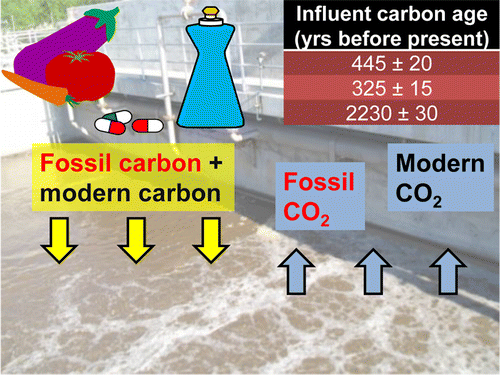An overlooked source of carbon emissions

Nations that pledged to carry out the Paris climate agreement have moved forward to find practical ways to reduce greenhouse gas emissions, including efforts to ban hydrofluorocarbons and set stricter fuel-efficiency standards. Now scientists report in the ACS journal Environmental Science & Technology that one source of carbon dioxide, a primary greenhouse gas, has been overlooked: wastewater treatment plants. Based on their findings, they recommend actions that could curb emissions from this source.
Linda Y. Tseng, currently at Colgate University, Diego Rosso, and colleagues from the University of California, Irvine, note that when the Intergovernmental Panel on Climate Change (IPCC) estimated global carbon dioxide (CO2) emissions, the data available to the organization did not include CO2 emission estimates from wastewater, which may contain fossil sources of carbon such as petrochemicals. Although it does take into account greenhouse gases methane and nitrous oxide, the IPCC model assumes that wastewater largely contains and releases carbon from non-petroleum sources—for example, human waste. However, studies have shown that relevant amounts of petroleum products, such as synthetic chemicals from detergents, wash into wastewater and can eventually add to total greenhouse gas emissions.
The team investigated the fossil-related carbon content of municipal and industrial wastewaters at various points in the treatment process. Including this carbon from treatment plants could increase estimates of their total greenhouse gas emissions by 12 to 23 percent over previous estimates that only included methane and nitrous oxide. However, the researchers found that treating wastewater sludge could offer an opportunity to reduce the fossil carbon emissions from treatment plants. They note that on-site carbon sequestration run on renewable energy could also lower these plants' impact.
More information: Linda Y. Tseng et al. Identification of Preferential Paths of Fossil Carbon within Water Resource Recovery Facilities via Radiocarbon Analysis, Environmental Science & Technology (2016). DOI: 10.1021/acs.est.6b02731
Abstract
The Intergovernmental Panel on Climate Change (IPCC) reported that all carbon dioxide (CO2) emissions generated by water resource recovery facilities (WRRFs) during treatment are modern, based on available literature. Therefore, such emissions were omitted from IPCC's greenhouse gas (GHG) accounting procedures. However, a fraction of wastewater's carbon is fossil in origin. We hypothesized that since the fossil carbon entering municipal WRRFs is mostly from soaps and detergents as dissolved organic matter, its fate can be selectively determined during the universally applied separation treatment processes. Analyzing radiocarbon at different treatment points within municipal WRRFs, we verified that the fossil content could amount to 28% in primary influent and showed varying distribution leaving different unit operations. We recorded the highest proportion of fossil carbon leaving the secondary treatment as off-gas and as solid sludge (averaged 2.08 kg fossil-CO2-emission-potential m–3 wastewater treated). By including fossil CO2, total GHG emission in municipal WRRFs increased 13%, and 23% if an on-site energy recovery system exists although much of the postdigestion fossil carbon remained in biosolids rather than in biogas, offering yet another carbon sequestration opportunity during biosolids handling. In comparison, fossil carbon contribution to GHG emission can span from negligible to substantial in different types of industrial WRRFs. With such a considerable impact, CO2 should be analyzed for each WRRF and not omitted from GHG accounting.
Journal information: Environmental Science & Technology
Provided by American Chemical Society


















